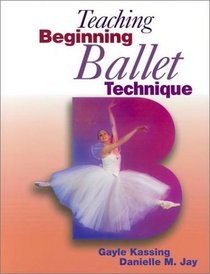Search -
Teaching Beginning Ballet Technique
Teaching Beginning Ballet Technique
Author:
Teaching a beginning ballet class can be a challenge. Even dancers who have studied ballet for many years may be intimidated by the idea of teaching ballet technique. Teaching Beginning Ballet Technique puts new teachers at ease by explaining exactly what to teach and when and how to teach it. The authors couple ballet pedagogy with motor learn... more »
Author:
Teaching a beginning ballet class can be a challenge. Even dancers who have studied ballet for many years may be intimidated by the idea of teaching ballet technique. Teaching Beginning Ballet Technique puts new teachers at ease by explaining exactly what to teach and when and how to teach it. The authors couple ballet pedagogy with motor learn... more »
ISBN-13: 9780873229975
ISBN-10: 0873229975
Publication Date: 7/1998
Pages: 187
Rating: 1
ISBN-10: 0873229975
Publication Date: 7/1998
Pages: 187
Rating: 1
5 stars, based on 1 rating
Genres:
- Arts & Photography >> Performing Arts >> Dance >> Ballet
- Arts & Photography >> Performing Arts >> Dance >> Classical
- Literature & Fiction >> General >> Contemporary
- Nonfiction >> Education >> Education Theory >> Physical Education





